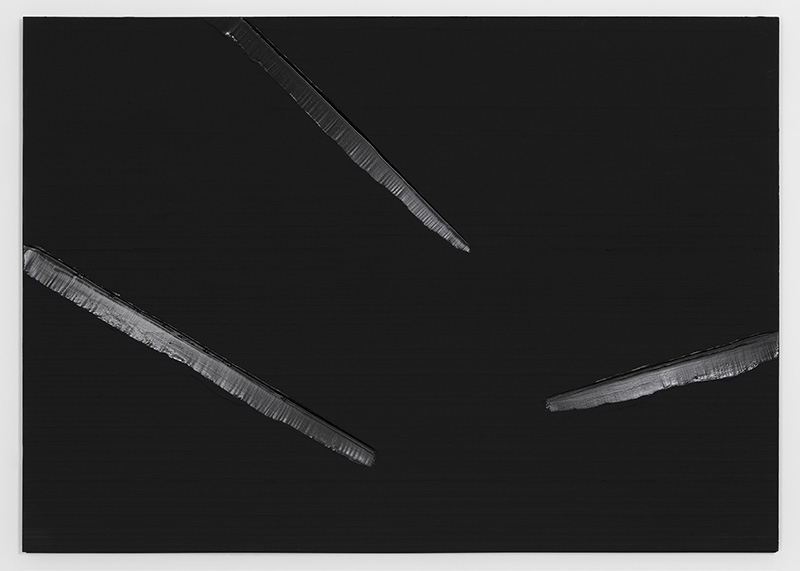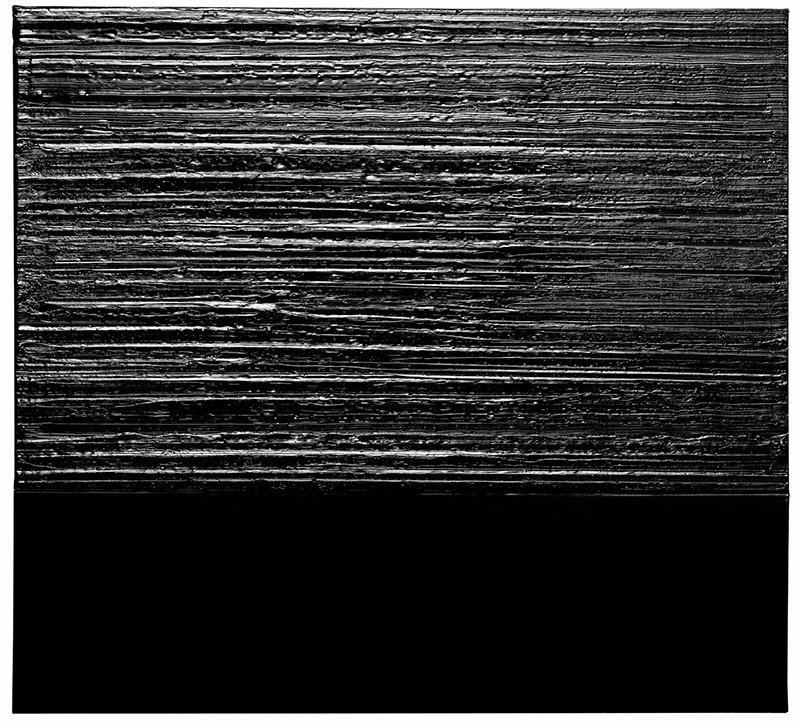ART CITIES:Tokyo-Pierre Soulages
 Pierre Soulages is recognised as one of the major figures of Abstract Art and the greatest painter of the current French scene. In 1979, Pierre Soulages, who had already been painting for over 30 years, embarked on a new phase of his work which he termed “Outrenoir”. By concentrating on one colour, black, and its relationship with light, he constructed a pictorial space that despite his reliance on one single colour, stands opposed to the monochrome in the development of modern art.
Pierre Soulages is recognised as one of the major figures of Abstract Art and the greatest painter of the current French scene. In 1979, Pierre Soulages, who had already been painting for over 30 years, embarked on a new phase of his work which he termed “Outrenoir”. By concentrating on one colour, black, and its relationship with light, he constructed a pictorial space that despite his reliance on one single colour, stands opposed to the monochrome in the development of modern art.
By Efi Michalarou
Photo: Perrotin Gallery Archive
A solo exhibition with works by Pierre Soulages inaugurates Perrotin Gallery in Tokyo. Pierre Soulages in 1938, inspired by the works of Paul Cézanne and Pablo Picasso, he enrolled in the École nationale supérieure des beaux-arts, Paris, but he was disappointed by the traditional instruction and soon moved back to Rodez. In 1946, having served in the military during World War II, Soulages returned to Paris and set up a small studio in Courbevoie. He began to paint in a wholly abstract style, producing canvases with overlapping black, barlike strokes on a glowing white, or sometimes colored, ground, which he exhibited at the Salon des Indépendants in 1947, where his somber paintings, cutting edge among the typical colorful paintings of the period, immediately caught the eye of renowned art world elders like Hans Hartung and Francis Picabia. The following year, he was chosen to participate in Germany’s first post-war exhibition of French Abstract painting, which toured all major German cities. There, he showed paintings of walnut stain on paper and paintings on canvas, of which one piece was chosen by the exhibition organizer for its poster. Soulages soon was the subject of solo exhibitions in Paris, Copenhagen, Munich and, from 1954 on, New York. Soulages visited Japan for the first time in 1956, during a long journey across Asia taken upon the occasion of his participation in the Tokyo International Biennial. Emerging at the beginning of the ‘70s, after 33 years of painting, or right in the middle of Soulages’ activity between 1946 to today, “Outrenoir” was a profound disruption that inaugurated a new kid of painting, without interrupting the overall coherency of his oeuvre. Soulages interrogated the relationship between light and dark, but from this point on he used the light outside of the canvas, which he considered his own veritable instrument. A highlight of Soulages’ career came in 1986 with a commission from the French Ministry of Culture to create a cycle of stained glass windows for the Romanesque Abbey-Church Sainte-Foy in Conques, France. In the 104 windows he created for Sainte-Foy, Soulages rendered a battery of straight and softly arcing black lines that engage the architecture and visitors’ movement through it, as well as the winds and mountains of the surrounding Aveyron. Since 2004, Soulages no longer works with oils, but with resins that provide him thicknesses of paint that he had never before attained. A new kind of work with light, via reflection, appeared, on the peaceful clarity of a vast surface of solid black, he engraves one or two very deep scarifications, sensual wide gashes, in which a vivid light settles to further accentuate the mystery. Most recently, Soulages has used the contrast between glossy or semi-glossy black and matte black, offering never before seen views of pictorial light.
Info: Gallery Perrotin, Piramide Building, 1F, 6-6-9 Roppongi, Minato-Ku, Tokyo, Duration: 7/6-19/8/17, Days & Hours: Tue-Sat 11:00-19:00, www.perrotin.com

